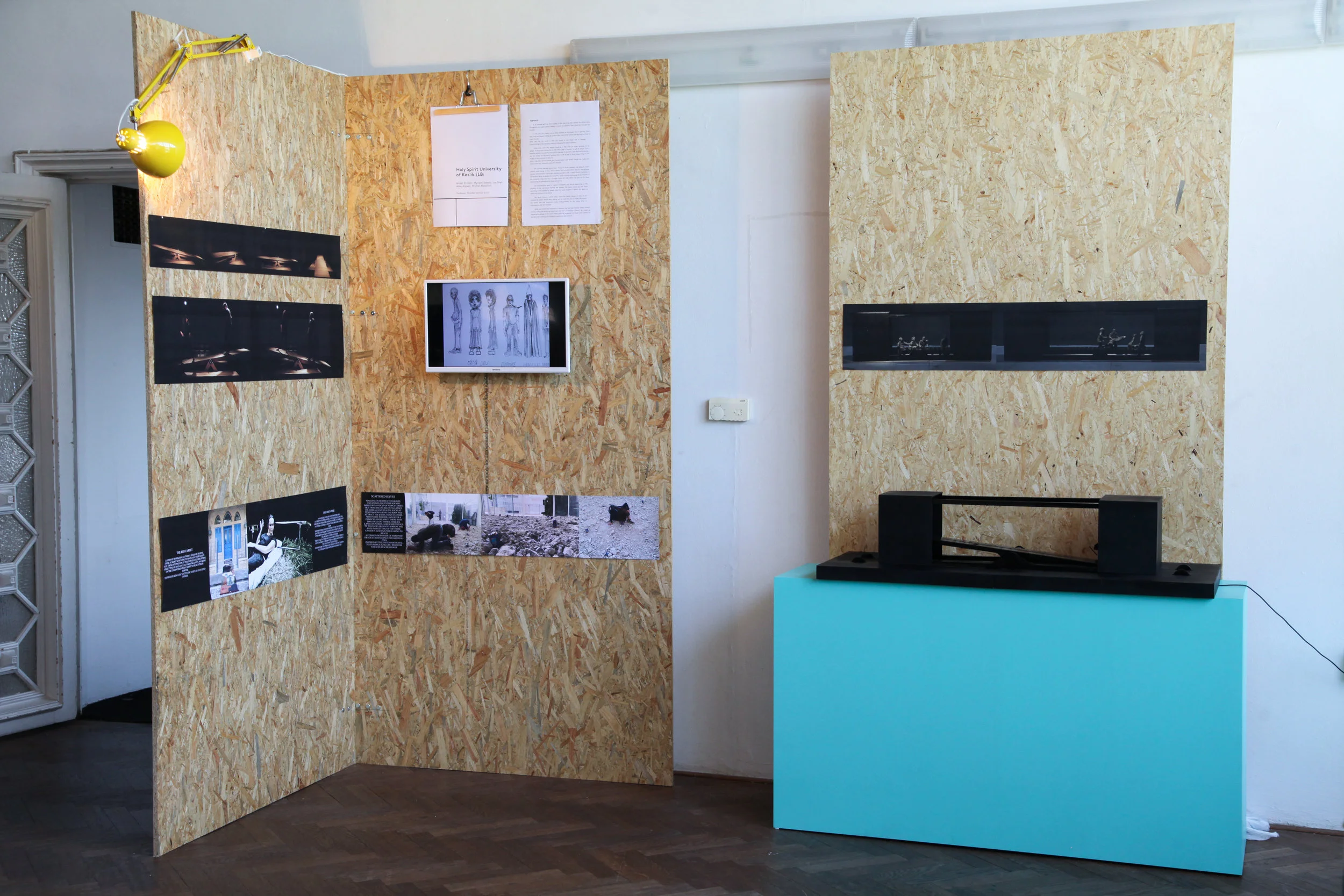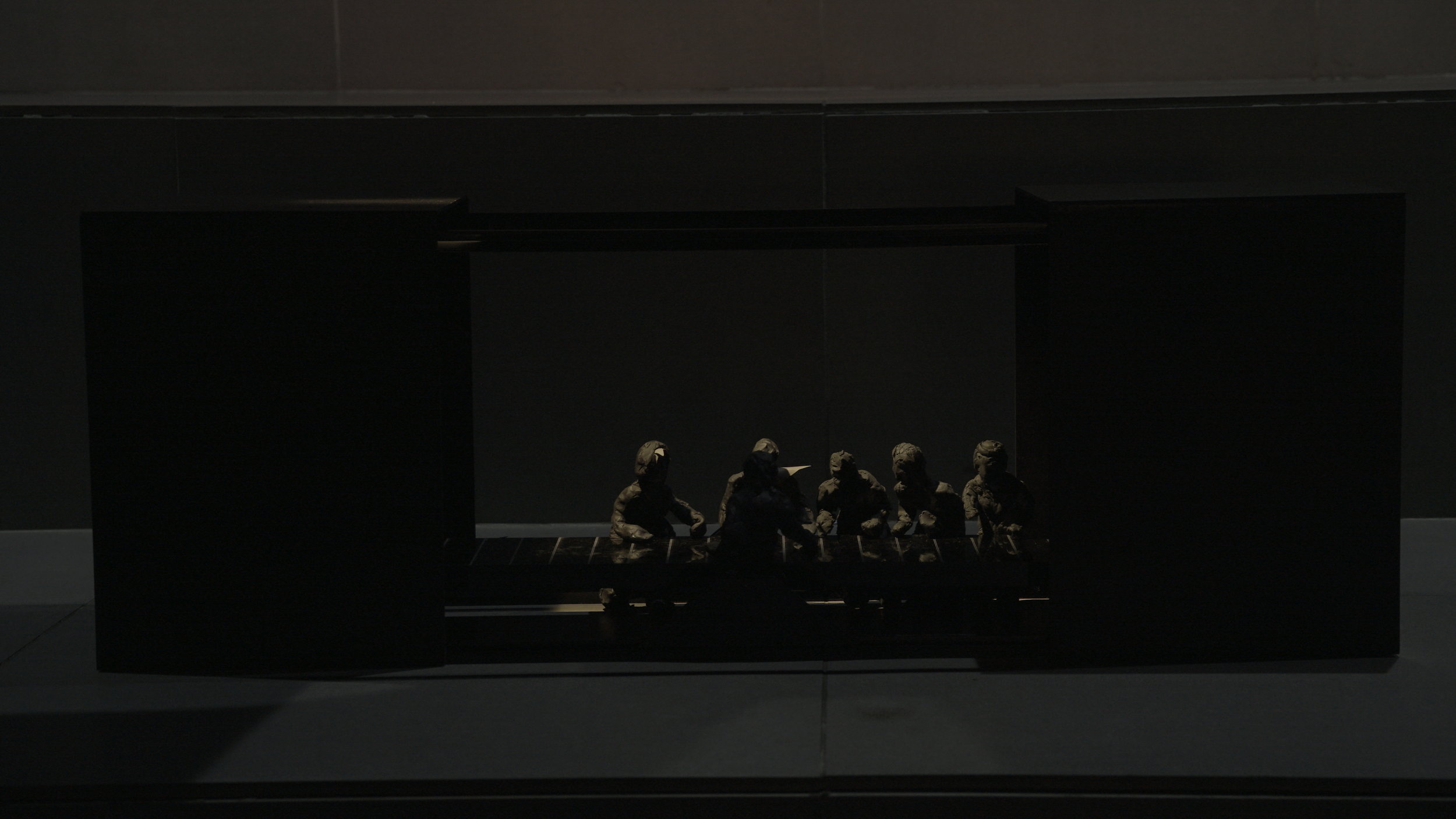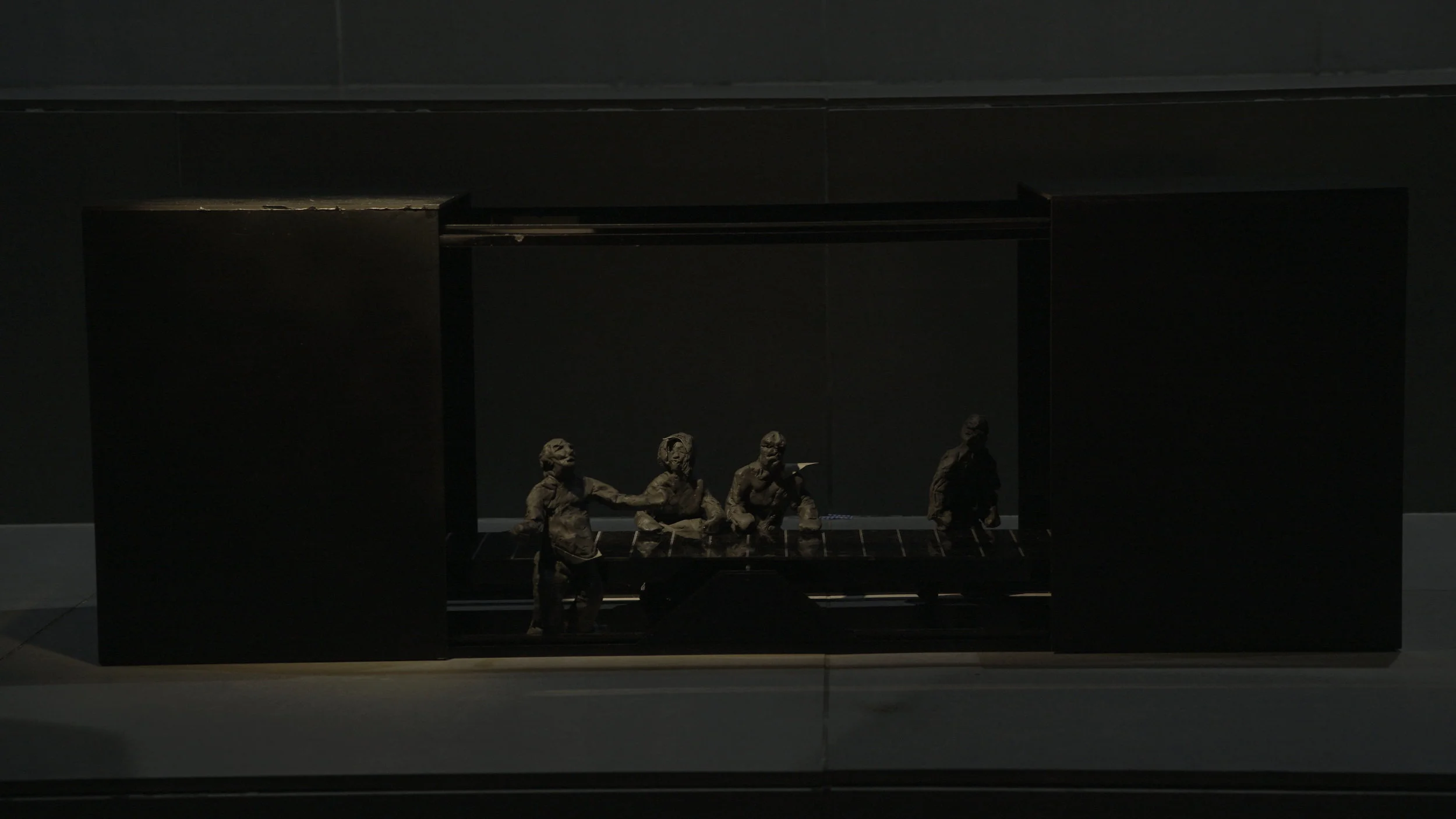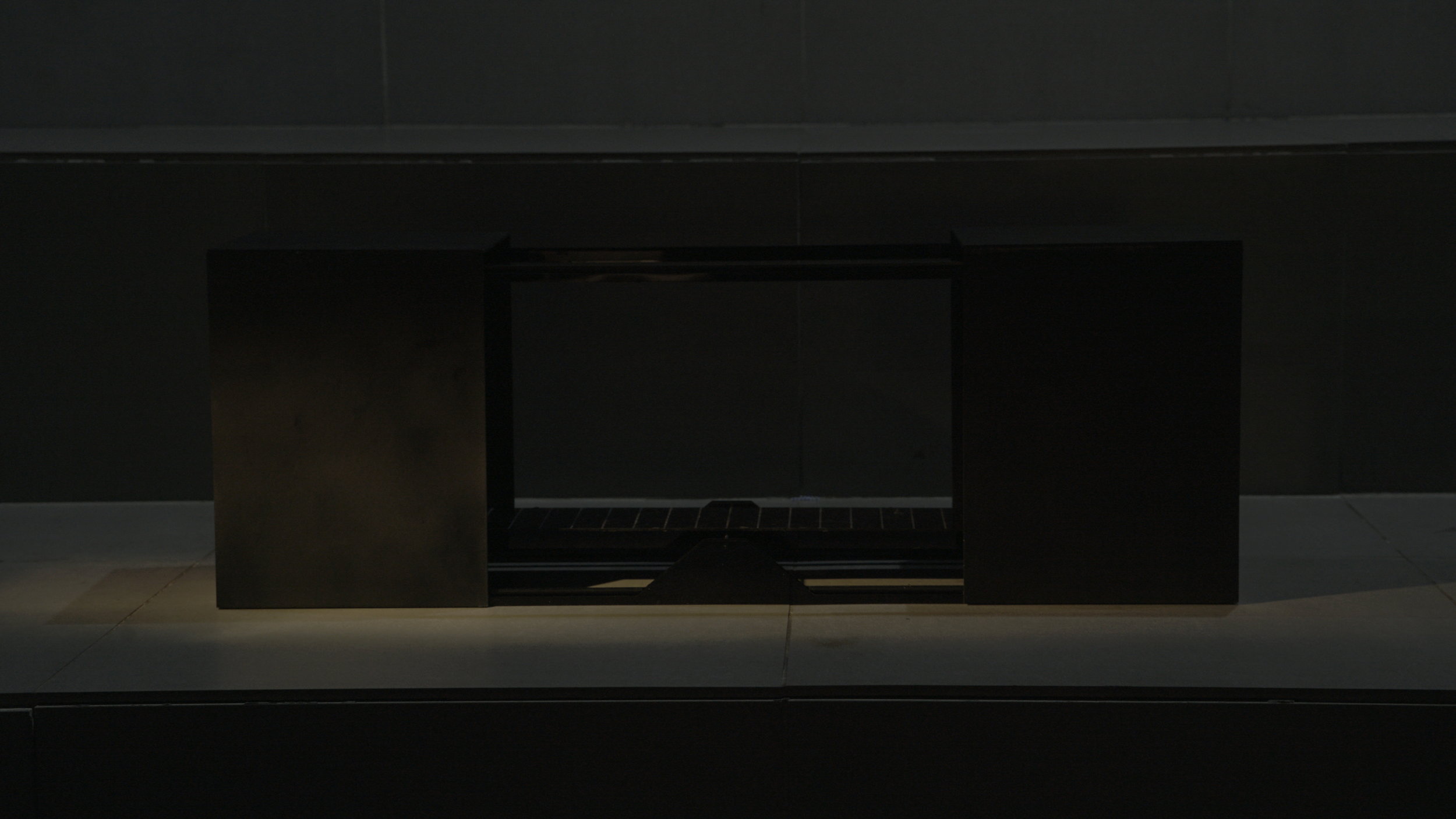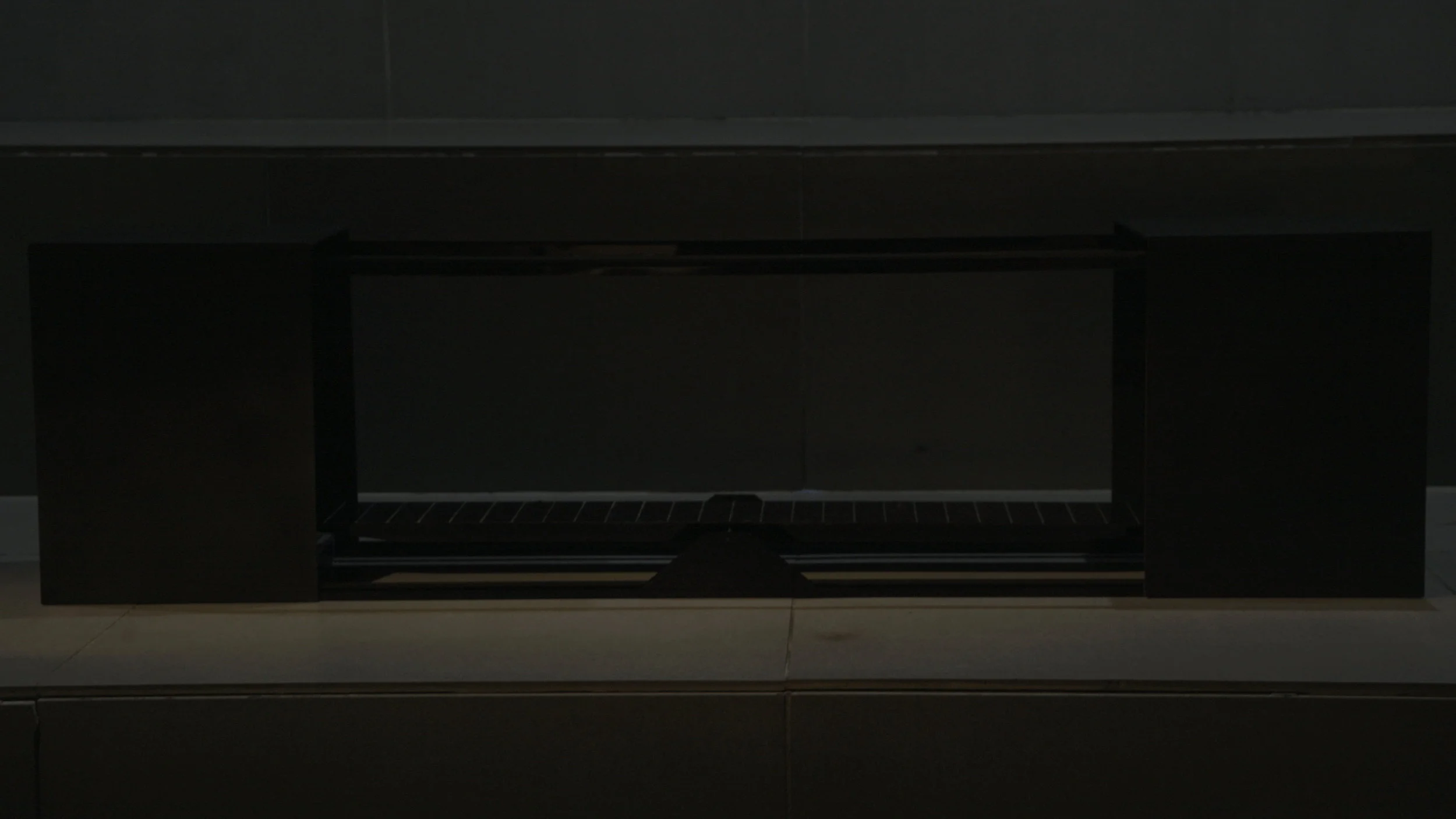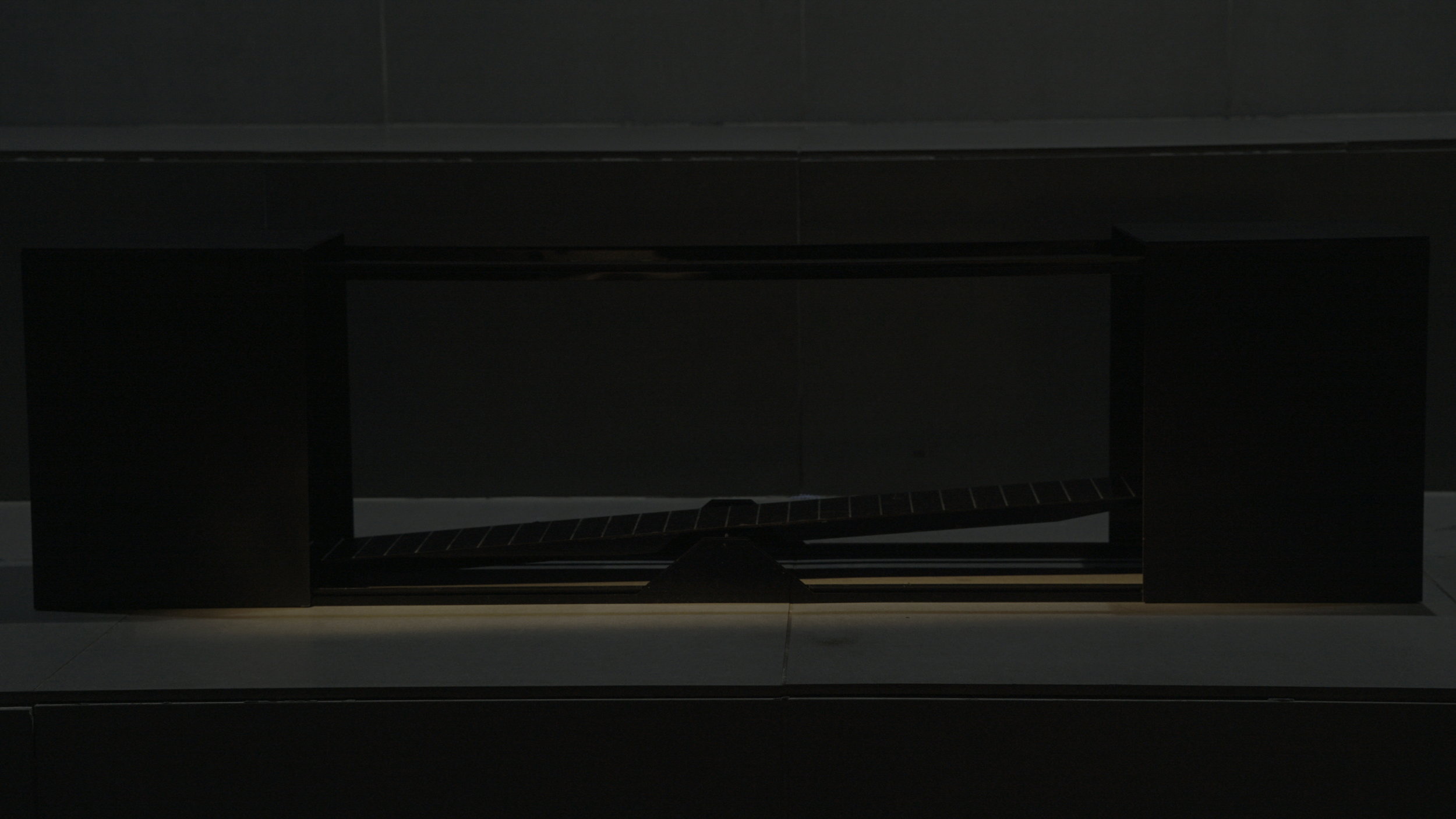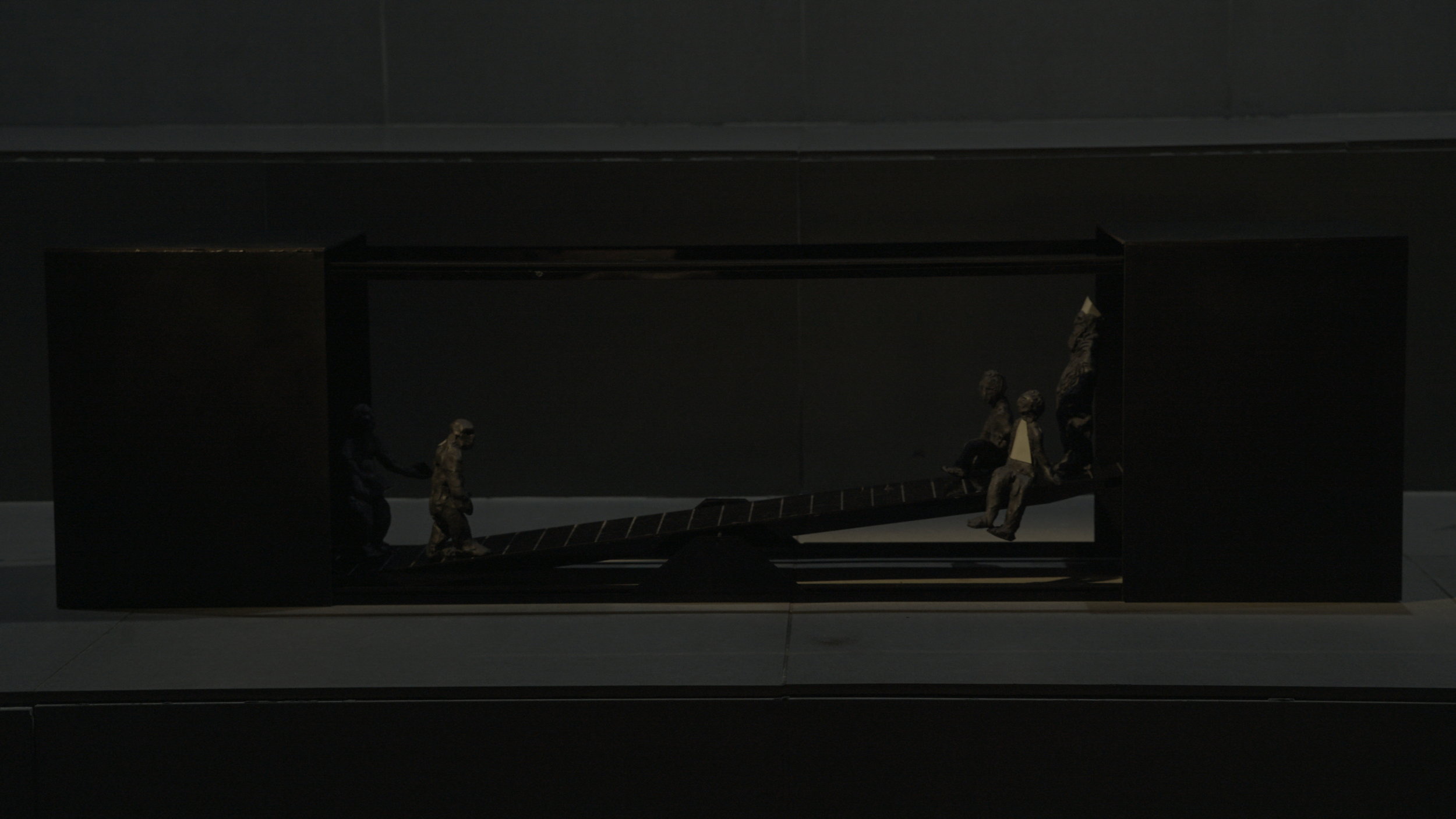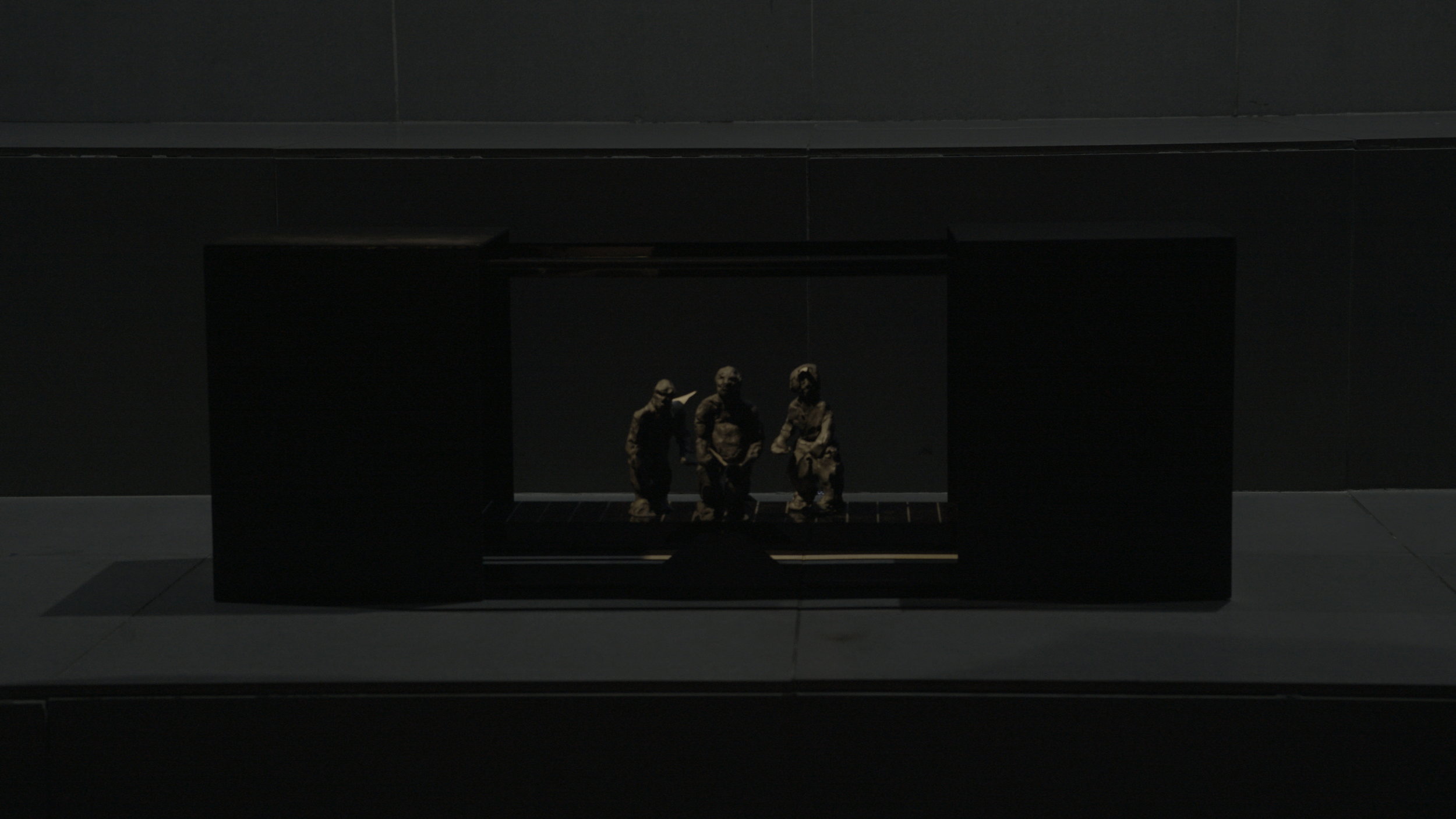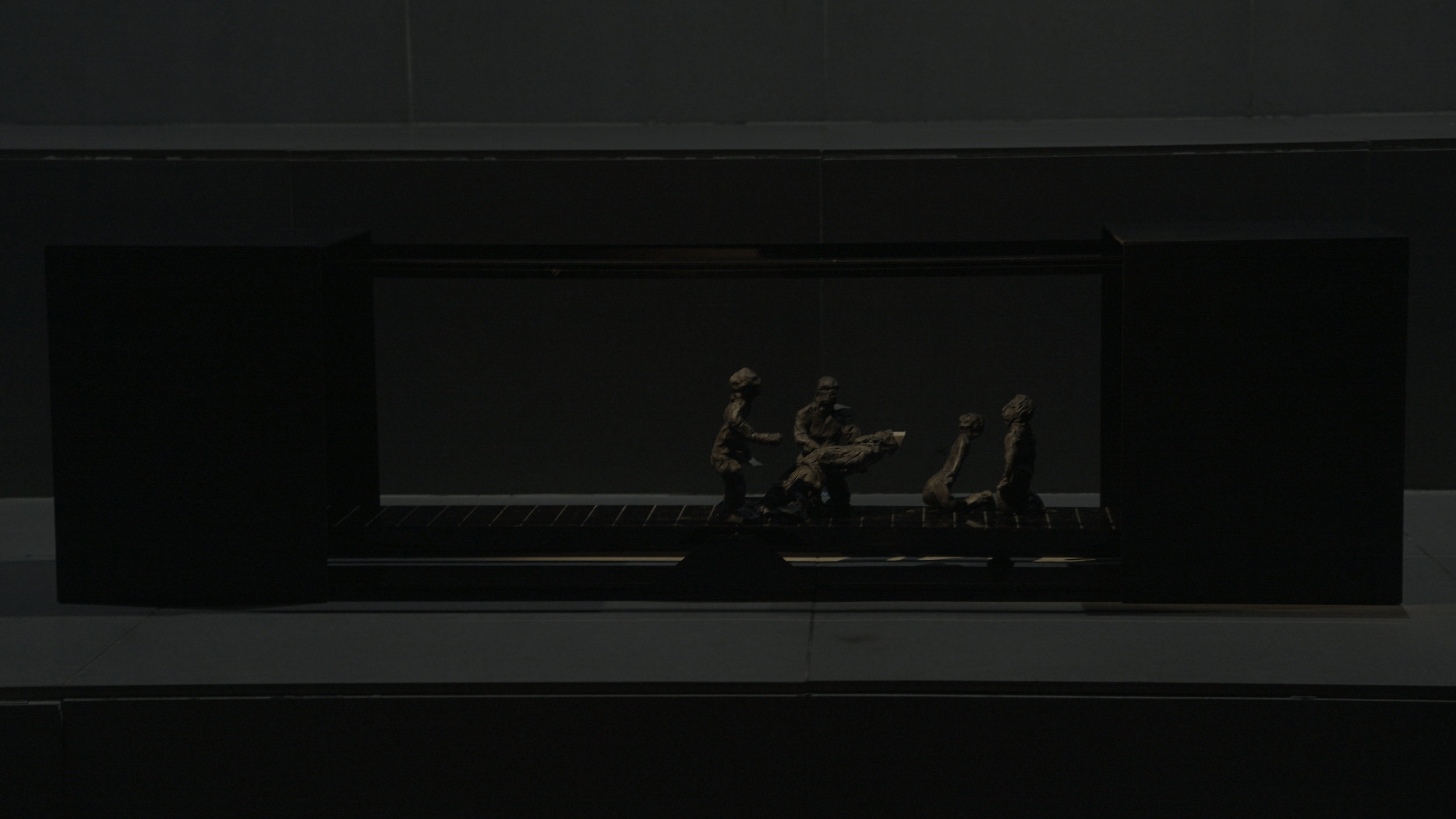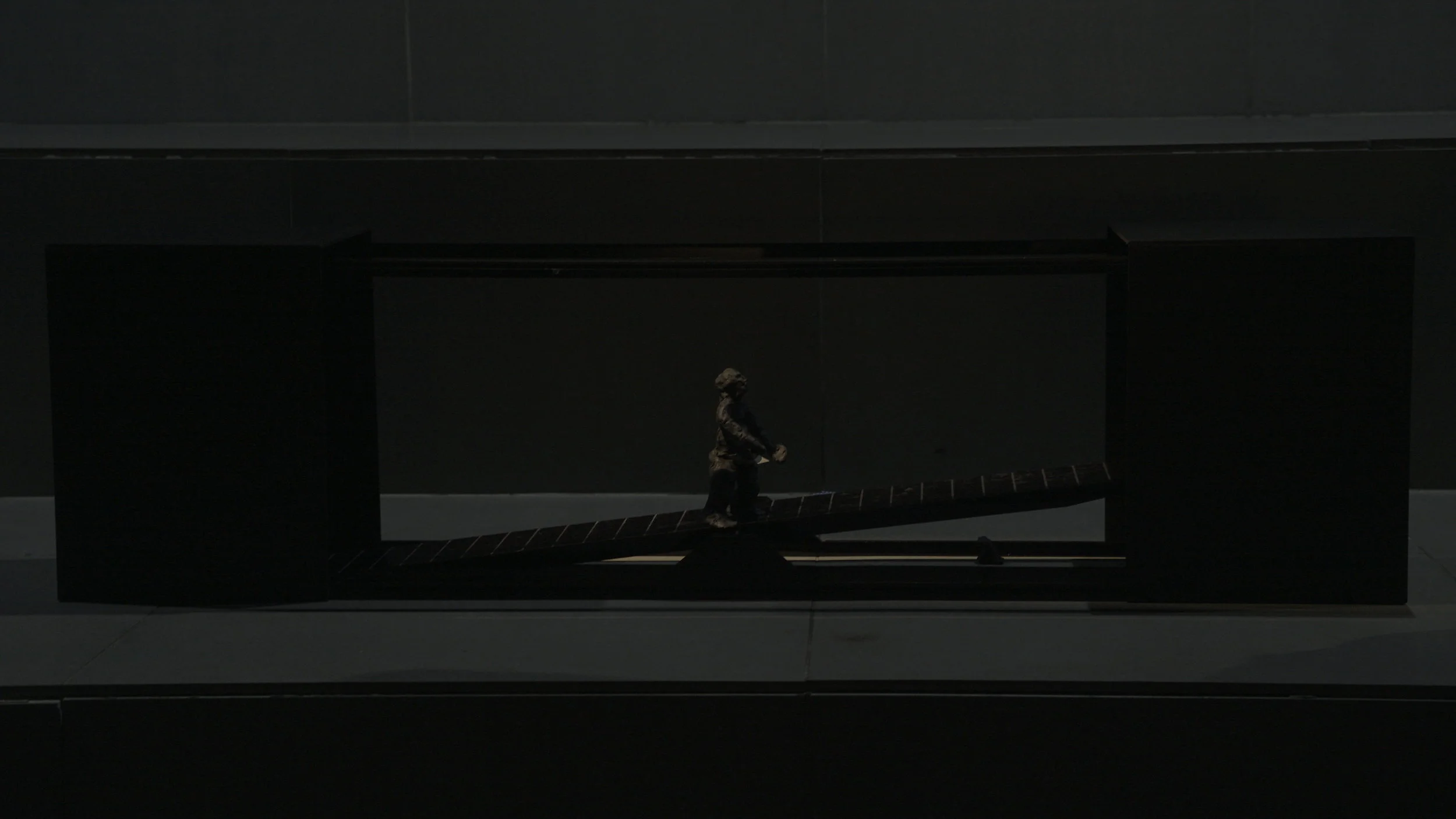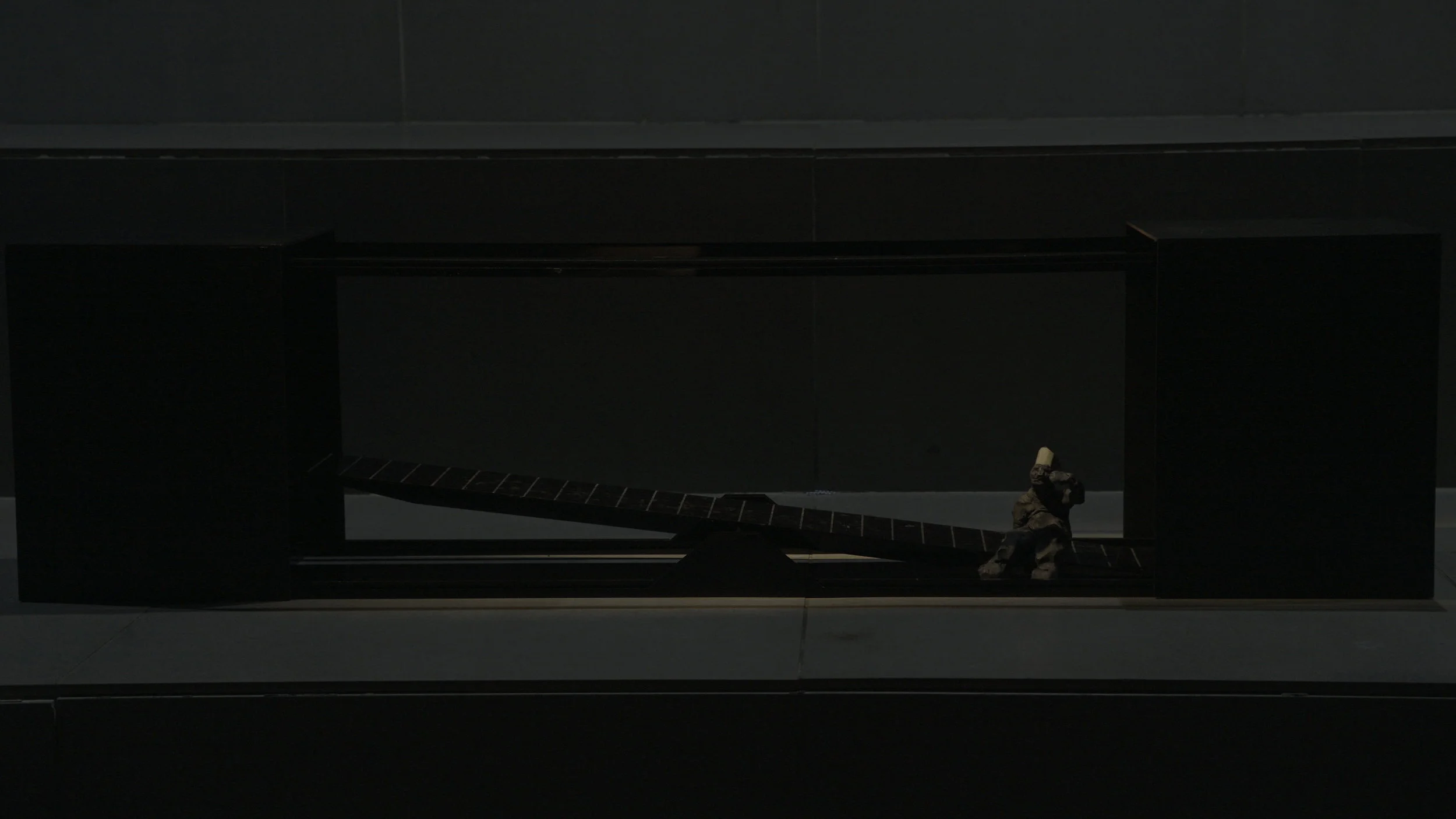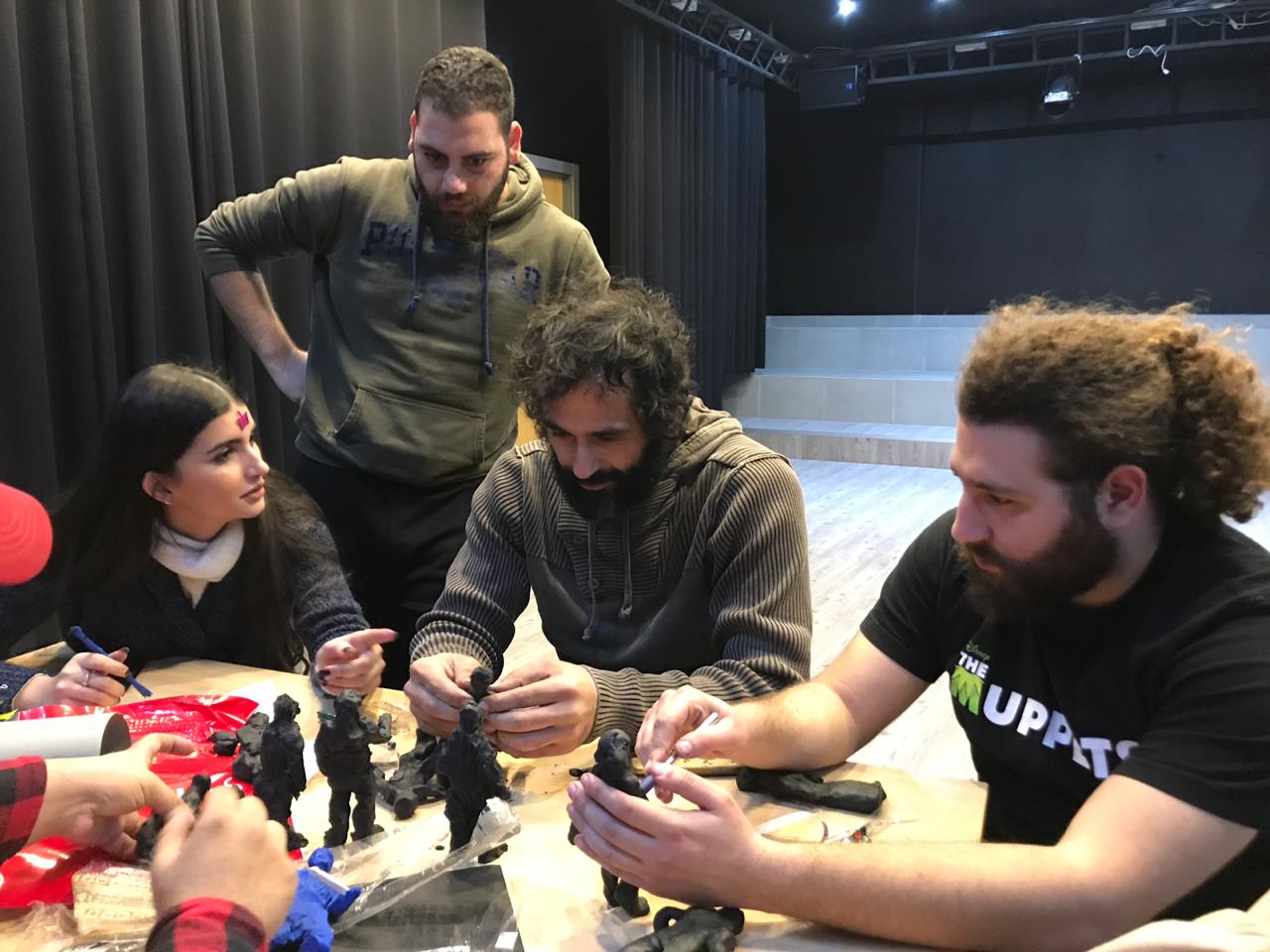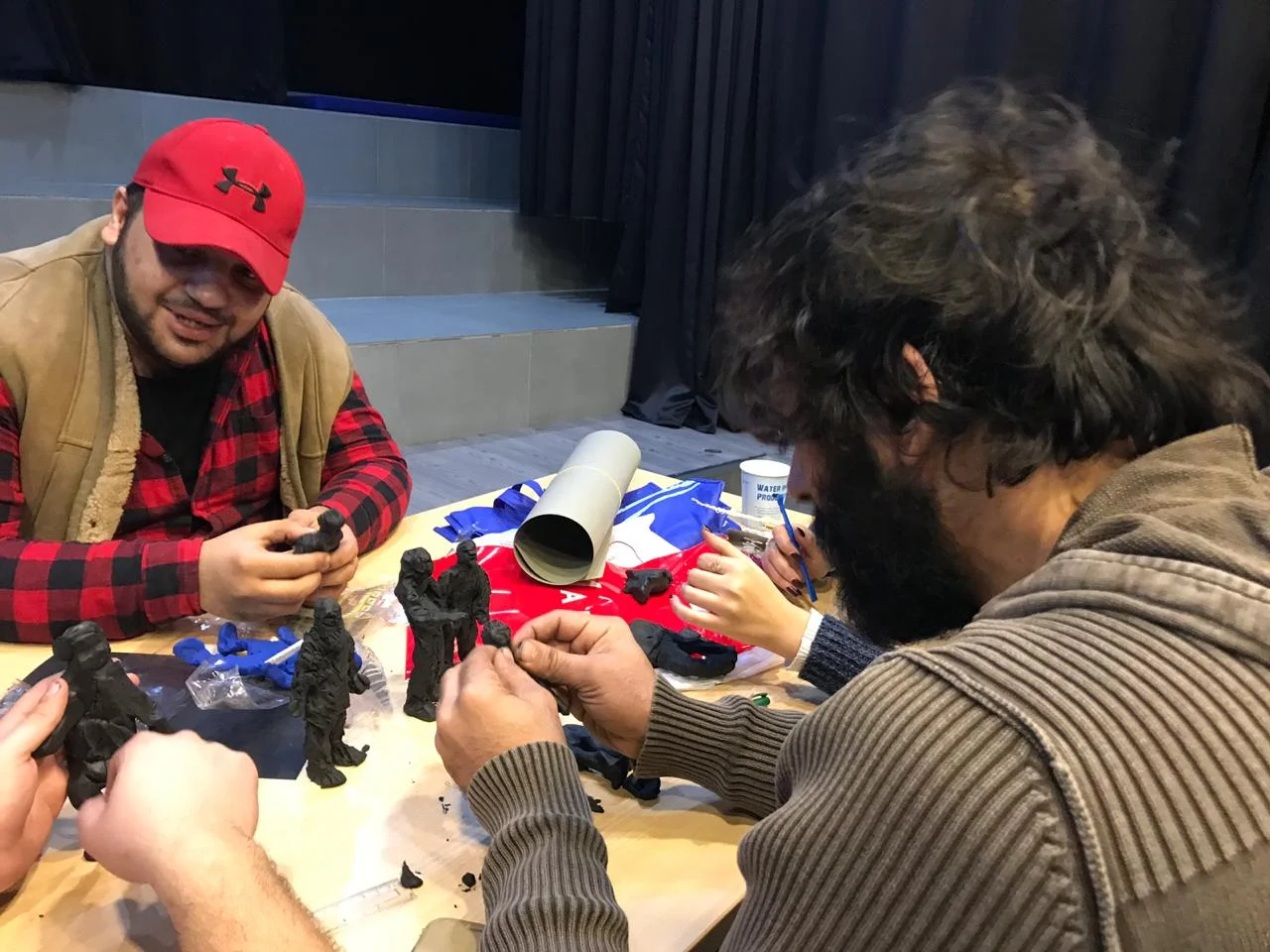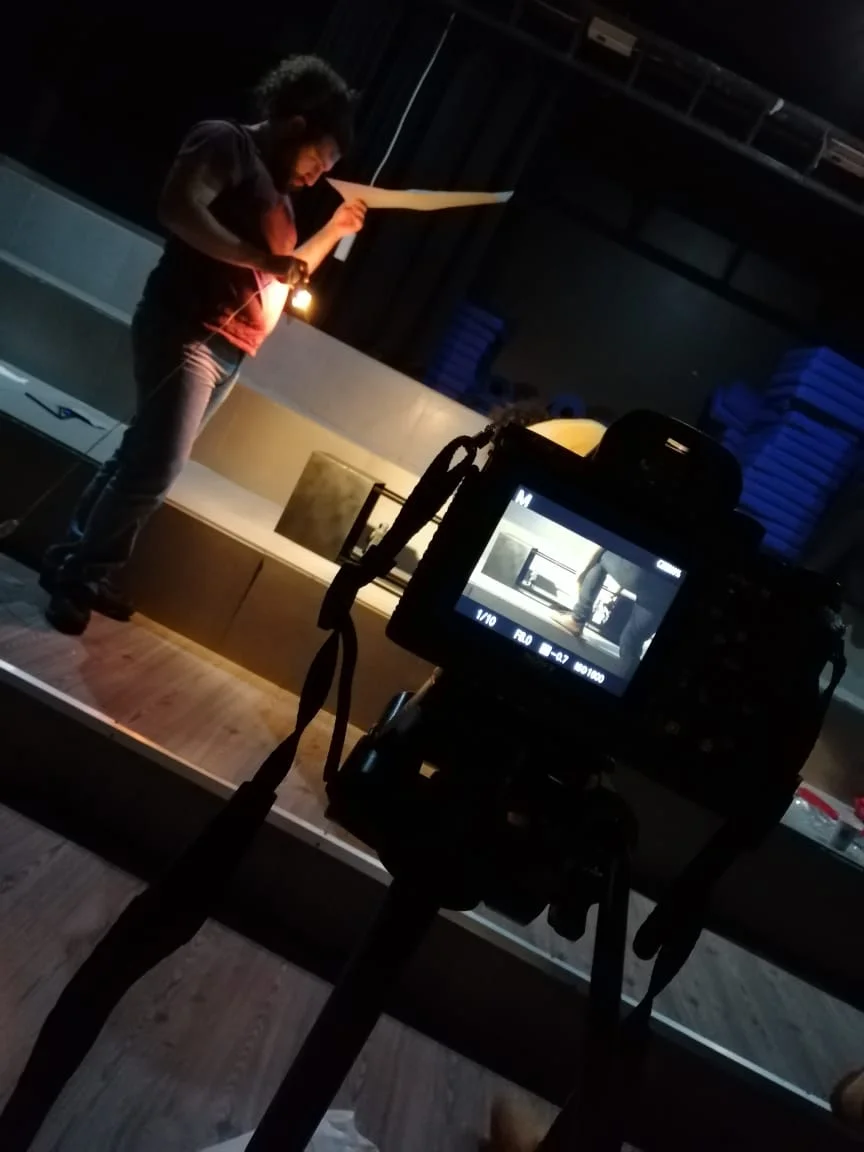“Ubu Roi by Alfred Jarry”
Photo of the Ubu Roi design exhibition, as conceived by the USEK students in the frame of the Common Design Project, a project by the Prague Quadrennial, in June 2019. Photography Ad Achkar, Copyright PQLB, www.pq-lb.org
The Common Design Project invites performance design courses (whether undergraduate or postgraduate) to set Ubu Roi by Alfred Jarry as a studio design project (conceived for any type of theatre, whether traditional proscenium, small and immersive spaces, found space projects, etc.) that encourages students and emerging designers to explore the text through their own lens, and to consider approaches meaningful to a contemporary audience.
It engages a discussion between students and educators that creates local conversations, not only about the text and approaches to its staging, but also about the nature of art, performance design/scenography and theatre.
The design course within the USEK Performing Arts Program submitted a project that was selected by the PQ international curators amongst more than 55 design submissions received from all over the world.
The USEK students joined 14 other schools and will bring their work to Prague for a joint display, engaging with other emerging artists, leading practitioners and PQ attendees over 3 days of moderated discussion, examining the play, the proposed designs, and having their concepts critiqued by leading practitioners Tom Piper (UK), Eloize Kazan (Mexico/Croatia), Freshteh Rostanour (USA/Iran) & Samuel Wang (Taiwan). An exciting opportunity to showcase the next generation of performance designers.
The exhibition will be open to the public for viewing from Thursday 13 June 2019 until Saturday 15 June 2019 (in the afternoon) and throughout the day of Sunday 16 June 2019.
Students present a complete design for a professional level production. Submissions include set and costume design for 34 scenes, 18 individually named locations and 35 individually described characters. A challenge to condense this feature into 20 images.
The main theme of King Ubu's play is power. This power is fictitious. In this scenography, father Ubu and mother Ubu associate with power at the top of the stage (plate). That's why their goal is to get to the summit, even though they never reach it. As the board is not fixed, they will face several adventures in their pursuit of the killing of the king and of his royal family. The movement of the board with randomly favor their goal, or stray them away from it. The board balances randomly, and both boxes transform the intimate space (house, cave) into a collective space (palace, battle, people). The boxes also serve as a backstage. The scenography swells, deflates, rises and falls, thus allowing a psychological atmosphere consistent with our vision of the text.
Curator: Parick Du Wors
All PQ2019 exhibitions and projects are curated, which means that participation is by selection through an open call application process.
Common Design Project Participants: Students from the USEK Performing Arts Program: Alexy Kawal, Anaël El Hani, Michel Abdallah, Myriam Saade, Joy Sfeir and Nizar Kassem, with the supervision of teachers Charbel Samuel Aoun, Nagy Souraty, Lina Saade.
A Non-Competitive Exhibition
The Common Design Project is a non-competitive project. Though curated for participation, it does not have prize categories.
Venue: Prague Exhibition Grounds
Exhibition Viewing: Thursday 13 June 2019 until Saturday 15 June 2019 (in the afternoon) and throughout the day of Sunday 16 June 2019.
The Common Design Project was originally conceived by Pamela Howard and had a major presence at the 2003 (A Lear for Our Time) and 2007 (The Birds) editions of PQ. The project returns with the international community of design for performance courses invited to set a selected text as a studio design project (conceived for any type of theatre, whether traditional proscenium, small and immersive spaces, found space projects, etc…) that encourages students and emerging designers to explore Ubu Roi by Alfred Jarry through their own lens by considering approaches meaningful to a contemporary audience.

